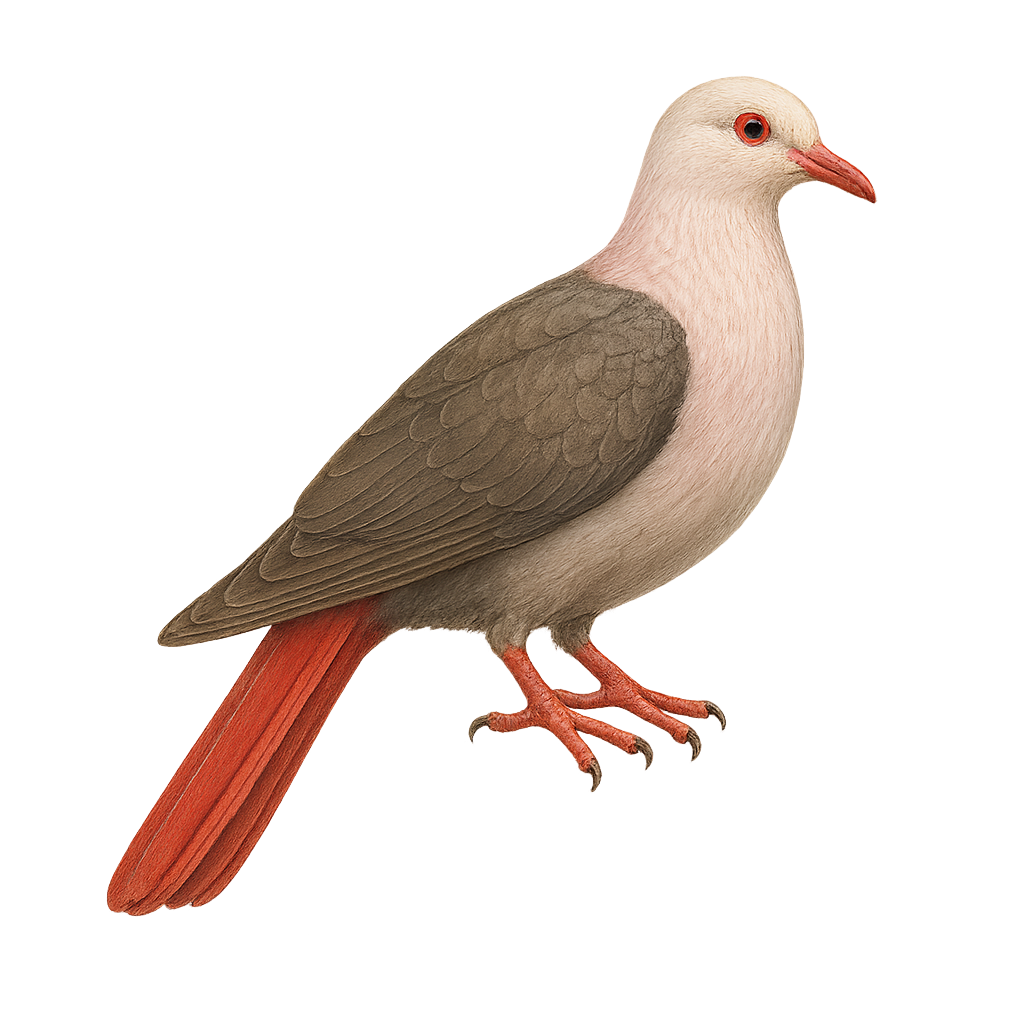Your wildlife photography guide.
Explore the pink pigeon in detail, study its behavior, prepare your shots.
Where to observe and photograph the pink pigeon in the wild
Learn where and when to spot the pink pigeon in the wild, how to identify the species based on distinctive features, and what natural environments it inhabits. The WildlifePhotographer app offers tailored photography tips that reflect the pink pigeon’s behavior, helping you capture better wildlife images. Explore the full species profile for key information including description, habitat, active periods, and approach techniques.
Pink Pigeon
Scientific name: Nesoenas mayeri

IUCN Status: Vulnerable
Family: COLUMBIDAE
Group: Birds
Sensitivity to human approach: Tolerant
Minimum approach distance: 10 m
Courtship display: September to October
Incubation: 13-15 jours
Hatchings: September to November
Habitat:
Native forests, wooded areas, nature reserves
Activity period :
Primarily active during the day, with peak activity in the morning and late afternoon.
Identification and description:
The Pink Pigeon, or Nesoenas mayeri, is an endemic species of Mauritius, known for its distinctive pale pink plumage and red-ringed eyes. Measuring about 36 cm in length, this bird features a reddish beak and pink legs. Once critically endangered, the Pink Pigeon has seen its population increase due to intensive conservation efforts. It primarily inhabits the island's native forests, feeding on fruits, seeds, and flowers. Although its population is rising, it remains vulnerable due to habitat loss and predation by introduced species. Captive breeding and reintroduction programs have been crucial for its survival.
Recommended lens:
400 mm – adjust based on distance, desired framing (portrait or habitat), and approach conditions.
Photography tips:
To photograph the Pink Pigeon, focus on the nature reserves of Mauritius where it is most commonly seen. Use a 400mm or longer telephoto lens to capture detailed images without disturbing the bird. The best times for photography are early morning or late afternoon when the light is soft. Be patient and discreet, as although tolerant, the Pink Pigeon can be disturbed by sudden movements.
The WildlifePhotographer App is coming soon!
Be the first to explore the best nature spots, track rutting seasons, log your observations, and observe more wildlife.
Already 1 431 wildlife lovers subscribed worldwide

